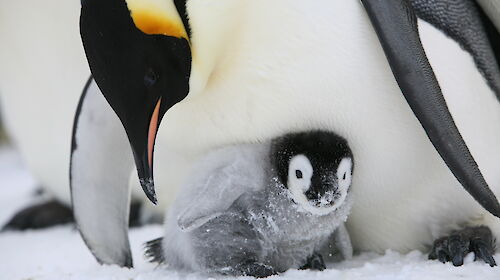Minister for the Environment Sussan Ley said the inspections were a significant undertaking, and an important way to verify compliance with and demonstrate the strength of international arrangements protecting Antarctica as a natural reserve, devoted to peace and science.
“The Antarctic Division and the Department of Foreign Affairs and Trade work closely together on Australia’s Antarctic engagement,” Minister Ley.
“This program of inspections is a very successful example of that cooperation.”
The inspection team was led by Australian Antarctic Division Director, Mr Kim Ellis, and included representatives from the AAD and the Department of Foreign Affairs and Trade.
“We were warmly welcomed by expeditioners at all the facilities we visited, which reflects the spirit of international cooperation that is fundamental to all Antarctic endeavours,” Mr Ellis said.
“Inspections allow Antarctic nations to check that the environmental and non-militarisation principles of the Antarctic Treaty system are being followed.”
“Our inspections found a high level of compliance with these principles. We were also very pleased to see examples of the scientific research being undertaken, and the operational practices of other Antarctic nations”, said Mr Ellis.
The Australian team inspected the following Antarctic stations in East Antarctica and the Ross Sea region:
- Jang Bogo (Republic of Korea)
- Inexpressible Island (China)
- Gondwana (Germany)
- Taishan (China)
- Molodezhnaya (Russia)
- Mountain Evening (Belarus)
In addition to the official inspections, the team visited six stations operated by other nations:
- McMurdo (USA)
- Scott (New Zealand)
- Mario Zucchelli (Italy)
- Zhongshan (China)
- Bharati (India)
- Progress (Russia)
The inspection program was supported by a range of Australian Antarctic program assets, including our three permanent research stations on the continent (Mawson, Davis and Casey), ski-equipped Basler BT-67 and Twin Otter aircraft, an RAAF C17-A Globemaster, and Australia’s intercontinental ice runway at Wilkins Aerodrome.
30 nations operate 76 stations (40 year-round and 36 seasonal) in Antarctica. Australia has an ongoing program of inspection activity, consistent with our commitment to the Antarctic Treaty system. Australia is one of 29 nations with decision-making rights under the Antarctic Treaty, known as Consultative Parties.
Consultative Parties have free access to conduct inspections of stations and installations in all areas of Antarctica, to verify compliance with the requirements of the Antarctic Treaty and its Environmental Protocol.
This is Australia’s tenth inspection program since 1963, with the last conducted in 2016.
Australia will table inspection findings at the 43rd Antarctic Treaty Consultative Meeting in Helsinki in May 2020.











